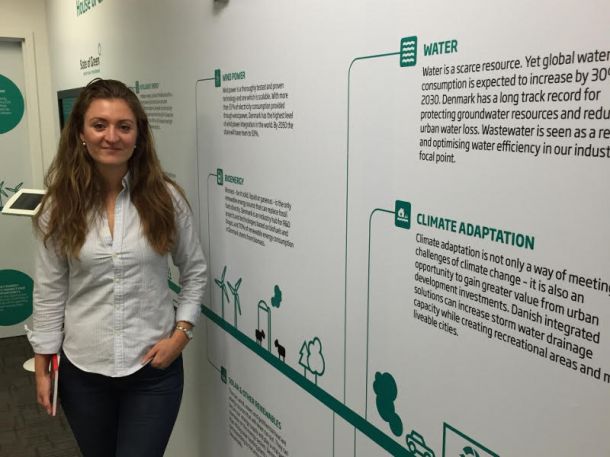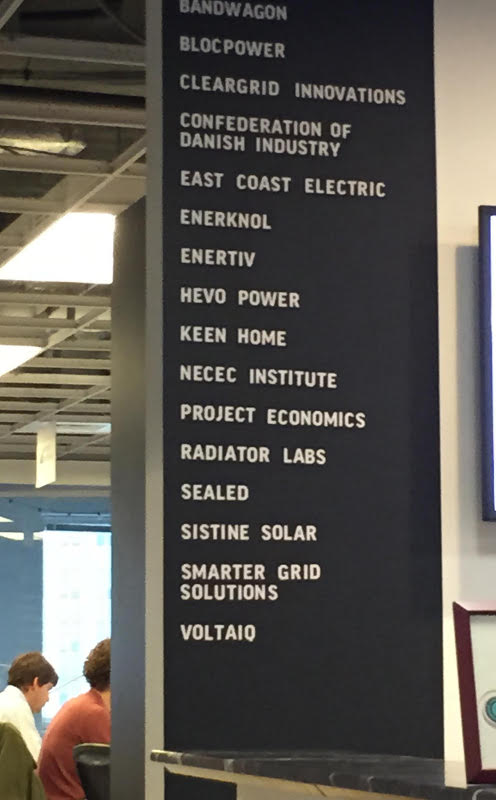
Denmark, with its tiny landmass of just 16,000 square miles and a population of 5.5 million, historically needed to think long and hard about its future. With more than 443 named islands, a coastline of 5,316 kilometers and the average altitude of its landmass just 31 meters above sea level, the exposure to climate change effects are imminent. Instead of denying the country’s vulnerability, the Danes have started to invest early in renewable energy and sustainable climate change solutions. Today, Copenhagen is arguably the greenest European capital. With electric bike shares, solar powerboats, energy efficient housing, and 40% of its electricity generated by wind power, the Danish seem to have it all. Danish companies have been at the forefront of innovating green technologies in recent years. Little-known Danish company Danfoss had been building “smart thermostats” long before a tiny company called Nest was bought by Google.
But there still seem to be some parts missing in order to link the Danish know-how to the US market. The Confederation of Danish Industry is trying to change this and has established a Danish cleantech hub right here in New York City. The Danish cleantech hub is a public-private partnership between Denmark and New York City that accelerates solution-sharing between the two cities through a single point of entry for all cleantech activities. The program is designed to help New York capitalize on Denmark’s technological savvy born out of decades of experience and more than 2,200 cleantech companies. Instead of opting for a lofty office in Manhattan, the small team, led by Frida Ferdinand has opted to go where the local innovators and smart and sustainable technology companies gather—at the Urban Future Lab in Brooklyn.Frida is looking out over a grey skyline, all the way to rainy Manhattan, when I met with her. So, why did they choose to be in a startup incubator instead of opening their own space? Frida is very clear about it: In order to help Danish companies enter the US market, she and her team need to be as close as possible to the New York cleantech ecosystem. By having their own space within the incubator, she not only gets to know the current companies, but she gets to take part in events, meet the large energy players in the city, and meet relevant industry players in the city. These connections are the most valuable piece of her services for Danish companies and stakeholders who are looking to enter the US market. With a complex and often lengthy sales cycle, understanding rules and regulations in the US energy and water supply market are crucial. Being able to email potential New York based energy companies is even more relevant.Her involvement in the Urban Future Lab is more than welcome. Emily Wheeler, the director of the lab, is looking for more international companies to join the incubator. Frida and the Danish Cleantech Hub are the ideal ambassadors and multipliers for this program which is financed by the NYCEDC.Are the Danish being heard in a city the size of New York? Frida says yes. Denmark and Scandinavian countries are being acknowledged as thought leaders in building smarter and more sustainable urban settings. So, Frida has adapted her strategy for bringing Danish companies to the market. Now, instead of trying to sell single technology components from one of her member companies, she and her team are telling more interesting stories about Copenhagen’s water management and about storm resilience. They also showcase best-practice solutions to problems that New York has only recently begun to address. By showcasing the Danish knowledge, Frida can start a discussion about the technologies and solutions that have helped Denmark evolve.After Superstorm Sandy, focus has shifted to making sure that New York will become better equipped for the next natural challenges. Whether this means creating resilient buildings and improving flood and storm water protection, or creating a smart electricity grid, New York needs to catch up on lots of frontiers. Mayor Bill de Blasio has recently announced the 80/50 initiative: curbing 80% of the city’s emissions by 2050. In order to reach these ambitious goals, hundreds of thousands of apartments and buildings need to be retrofitted—lots of opportunities for Danish and other international cleantech companies to move into the US market.Frida and her team offer those Danish companies an ideal landing pad. The incubator helps in a variety of ways: It lowers the cost of establishing a business in the US by sharing the costs of a local employee and office space; it provides specific information about upcoming business opportunities and operational intelligence on doing business in NY—including regulatory information; arguably most importantly, it finds local partners to expand the companies’ networks.It will be interesting to see which Scandinavian solutions will enter the US market first—New York certainly is ready for them.
These connections are the most valuable piece of her services for Danish companies and stakeholders who are looking to enter the US market. With a complex and often lengthy sales cycle, understanding rules and regulations in the US energy and water supply market are crucial. Being able to email potential New York based energy companies is even more relevant.Her involvement in the Urban Future Lab is more than welcome. Emily Wheeler, the director of the lab, is looking for more international companies to join the incubator. Frida and the Danish Cleantech Hub are the ideal ambassadors and multipliers for this program which is financed by the NYCEDC.Are the Danish being heard in a city the size of New York? Frida says yes. Denmark and Scandinavian countries are being acknowledged as thought leaders in building smarter and more sustainable urban settings. So, Frida has adapted her strategy for bringing Danish companies to the market. Now, instead of trying to sell single technology components from one of her member companies, she and her team are telling more interesting stories about Copenhagen’s water management and about storm resilience. They also showcase best-practice solutions to problems that New York has only recently begun to address. By showcasing the Danish knowledge, Frida can start a discussion about the technologies and solutions that have helped Denmark evolve.After Superstorm Sandy, focus has shifted to making sure that New York will become better equipped for the next natural challenges. Whether this means creating resilient buildings and improving flood and storm water protection, or creating a smart electricity grid, New York needs to catch up on lots of frontiers. Mayor Bill de Blasio has recently announced the 80/50 initiative: curbing 80% of the city’s emissions by 2050. In order to reach these ambitious goals, hundreds of thousands of apartments and buildings need to be retrofitted—lots of opportunities for Danish and other international cleantech companies to move into the US market.Frida and her team offer those Danish companies an ideal landing pad. The incubator helps in a variety of ways: It lowers the cost of establishing a business in the US by sharing the costs of a local employee and office space; it provides specific information about upcoming business opportunities and operational intelligence on doing business in NY—including regulatory information; arguably most importantly, it finds local partners to expand the companies’ networks.It will be interesting to see which Scandinavian solutions will enter the US market first—New York certainly is ready for them.

